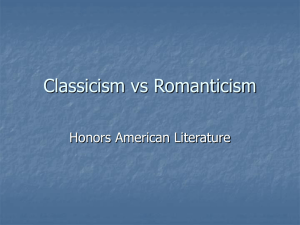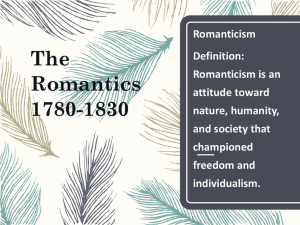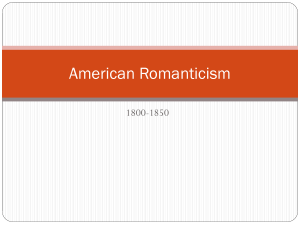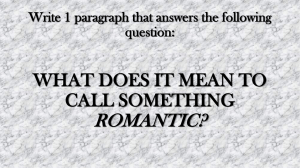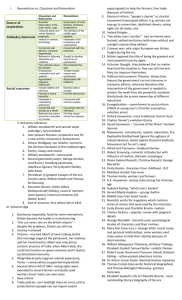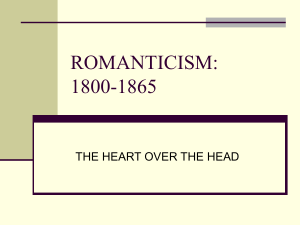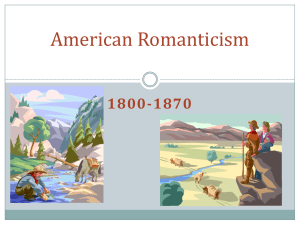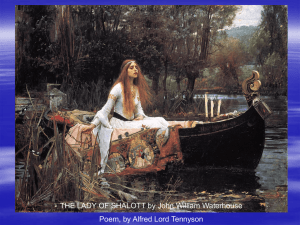Introduction to American Romanticism (2)
advertisement
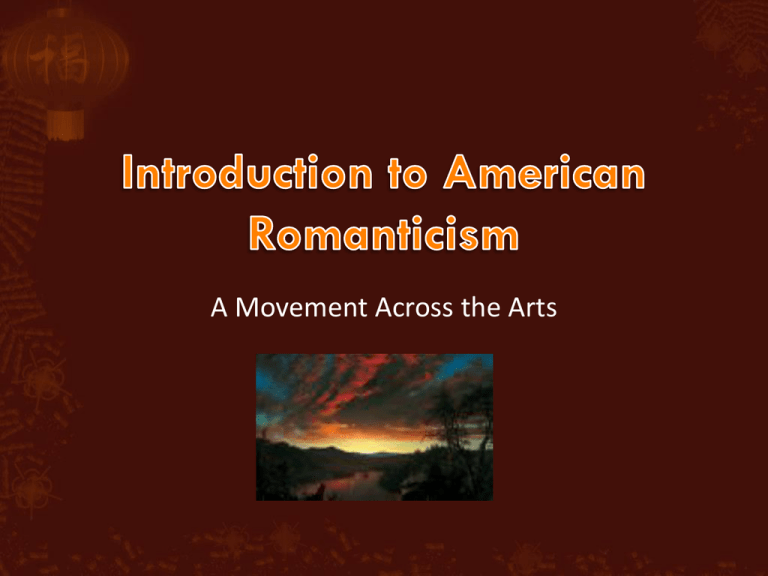
A Movement Across the Arts Romanticism refers to a movement in art, literature and music during the 19th century (1800 – 1860) American Romanticism was a reaction to the Classicism of the late 18th century Classicism was characterized as: Upholding REASON over nature and human nature Emphasizing Social over the personal The Common over the Individual In literature, Classicists valued Clarity, Order and Balance Classicism rested firmly on the belief that the city and urban center was the place to find success and self-fulfillment By the early 1800’s, early American cities were festering with social problems: Poverty Over-crowding Unemployment Malnourishment At this time in American History, exciting things were occurring outside of these urban centers: The Louisiana Purchase of 1803 and the subsequent Gold Rush prompted Westward Expansion and the idea of ‘Manifest Destiny’ America needed a new identity and a new spirit We will walk with our own feet we will work with our own hands we will speak our own minds -Ralph Waldo Emerson . . . Was born out of three main events: 1. Westward expansion 2. The need for a new ‘American’ identity that set it apart from the British past 3. The demise of the urban center Imagination Intuition Idealism Inspiration Individuality Imagination was emphasized over “reason.” This was a backlash against the rationalism characterized by the classical period or “Age of Reason.” Imagination was considered necessary for creating all art. Romantics placed value on “intuition,” or feeling and instincts, over reason. Emotions were important in Romantic art. Idealism is the concept that we can make the world a better place. Idealism refers to any theory that emphasizes the spirit, the mind, or language over matter – thought has a crucial role in making the world the way it is. Immanuel Kant, a German philosopher, held that the mind forces the world we perceive to take the shape of space-andtime. The Romantic artist, musician, or writer, is an “inspired creator” rather than a “technical master.” What this means is “going with the moment” or being spontaneous, rather than “getting it precise.” Romantics celebrated the individual. During this time period, Women’s Rights and Abolitionism were taking root as major movements. Walt Whitman, a later Romantic writer, would write a poem entitled “Song of Myself”: it begins, “I celebrate myself…” Classical art was rigid, severe, and unemotional; it hearkened back to ancient Greece and Rome Romantic art was emotional, deeplyfelt, individualistic, and exotic. It has been described as a reaction to classicism, or “anti-Classicism.” Classical Art Romantic Art “Classical” musicians included composers like Wolfgang Amadeus Mozart and Franz Josef Haydn. 1730-1820. Classical music emphasized internal order and balance. Romantic musicians included composers like Frederic Chopin, Franz Lizst, Pyotr Il’yich Tchaikovsky 1800-1910. Romantic music emphasized expression of feelings. In America, Romanticism most strongly impacted literature. Writers explored supernatural and gothic themes. Romantic authors distrusted progress, and often looked to the past for inspiration Writers also wrote about Nature – Nature was a source of inspiration and a reflection of the inner world Washington Irving was an early Romantic author Irving explored mythology and nature in his writings as a way to examine the human condition and moral development As you read “The Devil and Tom Walker” ask yourself what makes this short story a representation of Romantic Literature
